
Ahmed I was the sultan of the Ottoman Empire from 1603 to 1617. Ahmed's reign is noteworthy for marking the first breach in the Ottoman tradition of royal fratricide; henceforth, Ottoman rulers would no longer systematically execute their brothers upon accession to the throne. He is also well known for his construction of the Blue Mosque, one of the most famous mosques in Turkey.
A cannon is a large-caliber gun classified as a type of artillery, which usually launches a projectile using explosive chemical propellant. Gunpowder was the primary propellant before the invention of smokeless powder during the late 19th century. Cannons vary in gauge, effective range, mobility, rate of fire, angle of fire and firepower; different forms of cannon combine and balance these attributes in varying degrees, depending on their intended use on the battlefield. A cannon is a type of heavy artillery weapon.

Constantine XI Dragases Palaiologos or DragašPalaeologus was the last Roman (Byzantine) emperor, reigning from 1449 until his death in battle at the Fall of Constantinople in 1453. Constantine's death marked the definitive end of the Eastern Roman Empire, which traced its origin to Constantine the Great's foundation of Constantinople as the Roman Empire's new capital in 330.

The fall of Constantinople, also known as the conquest of Constantinople, was the capture of the capital of the Byzantine Empire by the Ottoman Empire. The city was captured on 29 May 1453 as part of the culmination of a 53-day siege which had begun on 6 April.

Rumelihisarı or Boğazkesen Fortress is a medieval Ottoman fortress located in Istanbul, Turkey, on a series of hills on the European banks of the Bosphorus. The fortress also lends its name to the immediate neighborhood around it in the city's Sarıyer district.
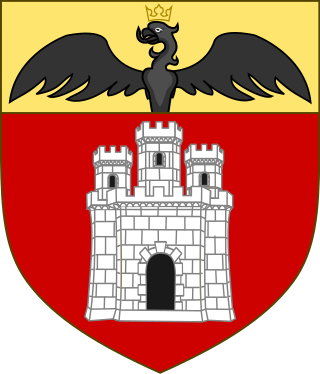
Giovanni Giustiniani Longo was a Genoese nobleman, captain, and defender of Constantinople during its siege in 1453. He was instrumental in its defense and commanded 700 men, as well as leading the land forces protecting the city.
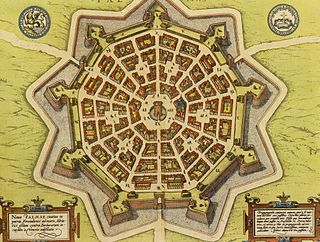
A bastion fort or trace italienne is a fortification in a style that evolved during the early modern period of gunpowder when the cannon came to dominate the battlefield. It was first seen in the mid-fifteenth century in Italy. Some types, especially when combined with ravelins and other outworks, resembled the related star fort of the same era.

The Dardanelles Gun or Great Turkish Bombard is a 15th-century siege cannon, specifically a super-sized bombard, which saw action in the 1807 Dardanelles operation. It was built in 1464 by Ottoman military engineer Munir Ali and modelled after Basillica, the Orban bombard that was used for the Ottoman besiegers of Constantinople in 1453.
During its 600-year existence, the Ottoman Empire made significant advances in science and technology, in a wide range of fields including mathematics, astronomy and medicine.

Mir Tamim Ansary is an Afghan-American author and public speaker. He is the author of Destiny Disrupted: A History of the World Through Islamic Eyes, West of Kabul, East of New York, and other books concerning Afghan and Muslim history. He was previously a columnist for the encyclopedia website Encarta.

The Patriarchal Cathedral Church of St. George is the principal Eastern Orthodox cathedral located in Istanbul, the largest city in Turkey and, as Constantinople, capital of the Byzantine Empire until 1453, and of the Ottoman Empire until 1922. Since about 1600, it has been the seat of the Ecumenical Patriarchate of Constantinople whose leader is regarded as the primus inter pares in the Eastern Orthodox Church, and is frequently looked upon as the spiritual leader of the 300 million Orthodox Christians worldwide.

The first full-scale Ottoman siege of Constantinople took place in 1422 as a result of the Byzantine Emperor Manuel II's attempts to interfere in the succession of Ottoman Sultans, after the death of Mehmed I in 1421. This policy of the Byzantines was often used successfully in weakening their neighbours.

Gunpowder artillery in the Middle Ages primarily consisted of the introduction of the cannon, large tubular firearms designed to fire a heavy projectile over a long distance. Guns, bombs, rockets and cannons were first invented in China during the Han and Song dynasties and then later spread to Europe and the Middle East during the period.
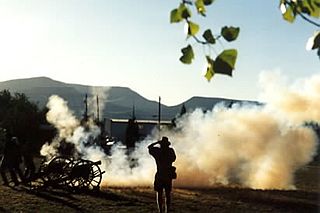
Cannon operation required specialised crew and gunners, who were first enlisted by the Spanish in the 14th century. The nature of cannon operation often depended on the size of the cannon and whether they were breech-loading or muzzle-loading. English cannons of the late 14th century became mobile, while the largest cannon required huge crews to transport and operate them.
The history of cannons spans several hundred years from the 12th century to modern times. The cannon first appeared in China sometime during the 12th and 13th centuries. It was most likely developed in parallel or as an evolution of an earlier gunpowder weapon called the fire lance. The result was a projectile weapon in the shape of a cylinder that fired projectiles using the explosive pressure of gunpowder. Cannons were used for warfare by the late 13th century in the Yuan dynasty and spread throughout Eurasia in the 14th century. During the Middle Ages, large and small cannons were developed for siege and field battles. The cannon replaced prior siege weapons such as the trebuchet. After the Middle Ages, most large cannons were abandoned in favor of greater numbers of lighter, more maneuverable field artillery. New defensive fortifications such as bastions and star forts were designed specifically to better withstand artillery sieges. Cannons transformed naval warfare with its deadly firepower, allowing vessels to destroy each other from long range. As rifling became more commonplace, the accuracy of the cannon was significantly improved, and they became deadlier than ever, especially to infantry. In World War I, a considerable majority of all deaths were caused by cannons; they were also used widely in World War II. Most modern cannons are similar to those used in the Second World War, including autocannons—with the exception of naval guns, which are now significantly smaller in caliber.
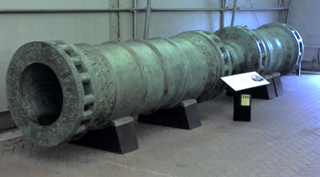
Orban, also known as Urban, was an iron founder and engineer from Brassó, Transylvania, in the Kingdom of Hungary, who cast large-calibre artillery for the Ottoman siege of Constantinople in 1453.
Nestor Iskander's Tale on the Taking of Tsargrad is a late 15th - early 16th-century Russian tale on the fall of Constantinople. It is extant in two redactions, both of which are thought to be derived from a single original now lost. The so-called 'Iskanderian' redaction, extant in a single copy, is part of an early 16th-century manuscript from the Troitse-Sergiev Monastery, and includes a reference to the supposed author, Nestor Iskander. The much more common 'chronicle' redaction forms the final chapter of the Russian chronicle of 1512, and differs from the 'Iskanderian' redaction chiefly in having no reference to the author.

Military forces of the Ottoman Empire used a variety of weapons throughout the centuries. The armoury in Topkapı Palace has a large collection of which it shows select items.
The San Francisco Writers Workshop is one of the oldest continuously running writing critique groups in the United States, meeting every Tuesday night, except for major holidays, since 1946. Successful published authors who first workshopped their books in the group include Khaled Hosseini, David Henry Sterry, Aaron Hamburger, Joe Quirk, Michelle Gagnon, Kemble Scott, Tamim Ansary, Erika Mailman, Zack Lynch, Zarina Zabrisky, and Ransom Stephens.
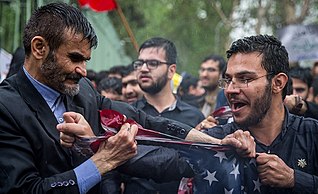
Anti-American sentiment in Iran is not new; the chant "Death to America" has been in use in Iran since at least the Islamic revolution in 1979, along with other phrases often represented as anti-American. A 1953 coup which involved the CIA was cited as a grievance. State-sponsored murals characterised as anti-American dot the streets of Tehran. It has been suggested that under Ayatollah Khomeini anti-Americanism was little more than a way to distinguish between domestic supporters and detractors, and even the phrase "Great Satan" which has previously been associated with anti-Americanism, appears to now signify either the United States or the United Kingdom.















